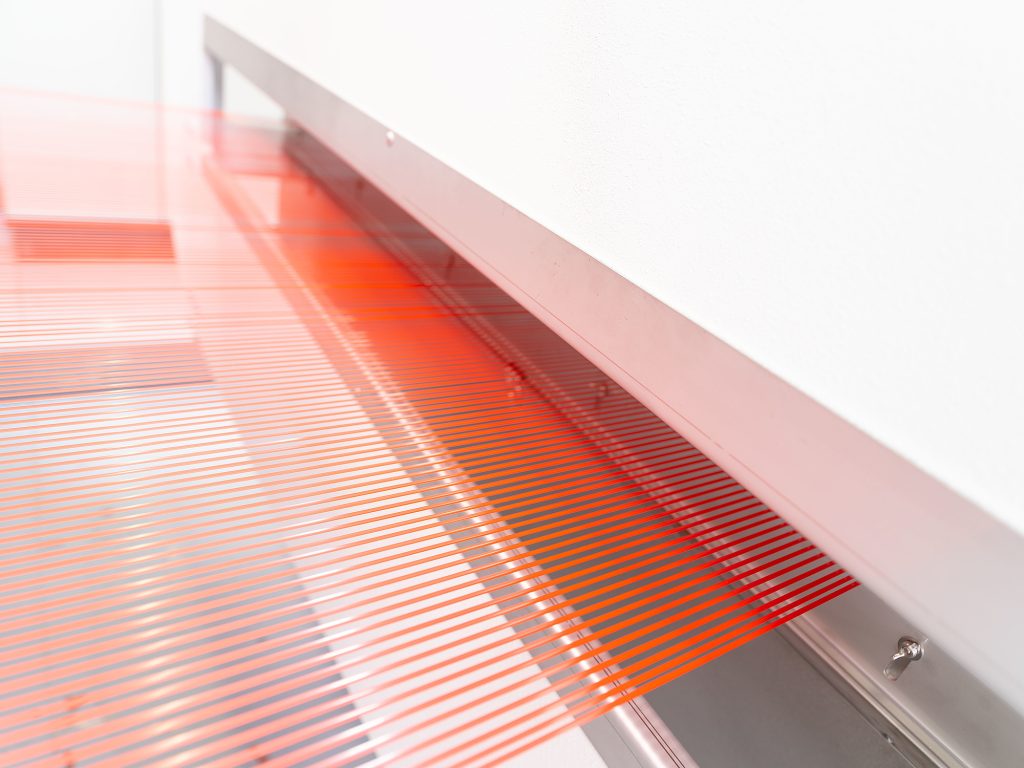
“Why are open-top polypropylene (PP) woven bags critical for sustainable construction and industrial packaging? The answer lies in their unique ability to balance durability, leak-proof performance, and recyclability—achieved through advanced material engineering, compliance with global standards, and VidePak’s 30+ years of expertise in automated production.”**
1. The Role of Open-Top PP Woven Bags in Construction Material Packaging
Open-top PP woven bags are indispensable for transporting abrasive and hygroscopic materials like cement, gypsum powder, and aggregates. Their design ensures easy filling and stacking while addressing two core challenges: material integrity during handling and prevention of fine particle leakage.
1.1 Ensuring Structural Integrity
Heavy-duty materials such as cement (density: 1.44 g/cm³) require bags with tensile strengths exceeding 40 N/cm² to withstand stacking pressures of up to 10 layers. VidePak’s BOPP laminated bags integrate virgin PP resin with a melt index of 2–4 g/10min, achieving tensile strengths of 50–70 N/cm². For example, in a 2024 project for a Vietnamese cement producer, VidePak’s 120 gsm bags reduced rupture rates by 35% compared to industry-standard 90 gsm alternatives.
1.2 Leakage Prevention Strategies
Fine powders like gypsum demand precision in fabric weaving and sealing:
- Uniform weave density: 12×12 strands per inch minimizes gaps, reducing particle leakage by 90%.
- Ultrasonic seam sealing: Achieves seam strengths of 18–22 kg/cm² (exceeding ASTM D5261), critical for high-vibration transport.
- PE inner liners: Reduce moisture permeability to <0.5% in humid climates, complying with EU EN 13592 standards.
2. Global Standards and Parameter Selection
Selecting optimal bag parameters requires alignment with regional regulations and operational demands:
Table 1: Key International Standards for PP Woven Bags
| Region | Standard | Key Requirements | VidePak’s Compliance Strategy |
|---|---|---|---|
| EU | EN 13592 | Load capacity ≥50 kg; UV resistance | BOPP lamination with 98% UV absorption |
| USA | ASTM D4632 | Tear resistance ≥15 N | High-tenacity PP + 20% recycled blends |
| Japan | JIS Z 0238 | Vibration resistance (3–5 Hz, 2 hours) | Multi-layer laminates with anti-static coatings |
| Australia | AS 2070 | Waterproofing (≤1% moisture permeability) | PE-coated variants tested at 85% RH |
Case Study: Aggregate Packaging in Australia
A Sydney-based contractor required AS 2070-compliant bags for crushed stone transport. VidePak delivered PE-coated open-top bags with 150 gsm PP fabric and 50 µm liners, reducing moisture-induced degradation by 60% and achieving zero leakage during 1,000 km road simulations.
3. Sustainability and Circular Economy Integration
The global construction industry generates 10 billion tons of waste annually, with packaging contributing 5–7%. VidePak addresses this through:
- Recycled PP blends: 30% post-consumer recycled content, reducing carbon footprints by 25% while maintaining 90% of virgin PP’s tensile strength.
- Closed-loop recycling partnerships: Collaborations with Sustainable FIBC Bulk Bags ensure 80% of returned bags are reprocessed into new products.
4. Technical Parameters and Customization
Table 2: VidePak’s Open-Top Bag Portfolio
| Parameter | Specification | Application Example |
|---|---|---|
| Material | Virgin PP + BOPP/PE lamination | Cement, Gypsum Powder |
| Weight Range | 80–200 gsm | Aggregates, Mortar Mix |
| Load Capacity | 20–50 kg | Stacking up to 10 layers |
| Seam Strength | 18–22 kg/cm² (Ultrasonic) | High-vibration transport |
| Certifications | EN 13592, ASTM D5261, JIS Z 0238 | Global export compliance |
FAQs
Q: How does bag thickness affect cost and performance?
A: A 150 gsm bag offers 50% higher puncture resistance than 100 gsm but increases material costs by 20%. VidePak’s graded thickness designs optimize cost-performance ratios for bulk vs. retail packaging.
Q: Are recycled PP bags suitable for heavy loads?
A: Yes. Nano-reinforced recycled PP maintains 90% of virgin material’s strength, supporting 40 kg loads at a 10% cost premium.
5. Future Trends: Smart Packaging and ESG Alignment
VidePak is piloting QR-code-enabled bags for real-time tracking of moisture levels in gypsum shipments, reducing spoilage by 25%. Additionally, partnerships with Open-Top PP Woven Bags: A Sustainable Choice aim to achieve 100% recyclability by 2030 through bio-based PP blends (30% algae derivatives).
Conclusion
Open-top PP woven bags are pivotal in advancing sustainable construction logistics. VidePak’s fusion of Starlinger automation, ISO-certified quality control, and adaptive material science positions it as a leader in the $50B global industrial packaging market. By aligning with global standards and prioritizing circular economy principles, the company exemplifies how innovation can drive both profitability and environmental stewardship.
Data synthesized from industry reports (2025), ASTM/ISO standards, and VidePak’s production analytics.